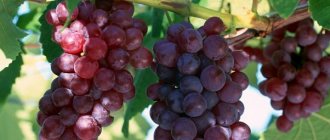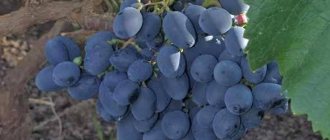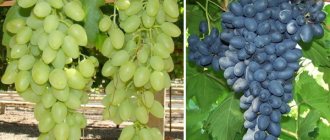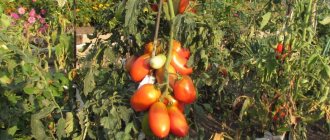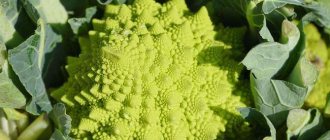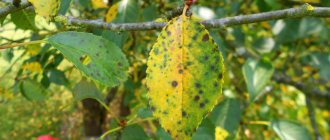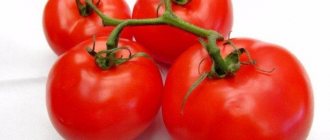The work of Hungarian breeders led to the appearance of the Kishmish 342 grape variety. It is popular among winegrowers due to its balanced taste, almost complete absence of seeds and good yield. Hungarian raisin is suitable for growing in the south of Russia and in the regions of the middle zone. To get a good harvest, you only need to follow all recommendations for planting and care. Kishmish grapes or GF 342 is a very early variety that has won the trust of many summer residents.
Advantages and disadvantages
Like any other variety, “Kishmish 342” has its advantages and disadvantages.
Pros:
- Lack of seeds in fruits.
- Abundant and stable harvest.
- Early ripening.
- Fast growth of the bush.
- High rates of resistance to fungal diseases.
- Undemanding in agricultural technology.
- Long-term storage.
- Possibility of cultivation in regions with temperate climates and northern latitudes.
- Versatility in use.
Minuses:
- Simple appearance and small berries.
- Lack of commercial benefit from the sale due to lack of demand.
- Susceptibility to attacks by wasps.
- Tendency to cracking of berries in rainy weather.
Reproduction
The Kishmish 342 grape of the Hungarian selection is bred only from cuttings, this is the optimal way for a temperate climate and preserving the varietal characteristics of the crop. You can prepare planting material yourself or purchase it from a nursery. Recommendations for preparing cuttings at home:
- Cuttings are taken in October from the fruit vine, about 80 cm in size.
- The material is tied in a bundle, placed in sand, it must be constantly wet, and lowered into the basement. You can store it in the refrigerator, wrap the planting material with a damp cloth, and pack it in a plastic bag.
- In the spring, the quality of the planting material is checked, a small fragment is cut off, the juice should come out. Place in water for 48 hours.
- For germination, pour peat into a container, a plastic glass will do, place the cutting with the lower part, the upper fruit bud should be above the surface, germinate for 3 weeks in a lighted place.
Planting material Kishmish 342 is planted on the site in mid-May.
Origin
At the end of the twentieth century, Hungarian breeders crossed the American grapes “Sidlis Perlet” and the European “Vilar Blanc”, as a result of which a new variety “Kishmish GF-342” or “Hungarian” was developed. From the American “parent” the variety inherited early ripening, dessert taste and the absence of seeds in the berries, and from the European it inherited ease of care, frost resistance and good yield. Despite the fact that “Kishmish 342” has been cultivated in Russia for decades, it has never been included in the State Register of Breeding Achievements of the Russian Federation.
Parents of “Kishmish 342” are “Sidlis Perlet” and “Vilar Blanc”
Description of the variety
Kishmish 342 is a seedless grape variety of Hungarian selection. It is distinguished by early ripening, confirmed seedlessness. This is not Heliodorus, which has a seed in every large berry; in 342 there may be rudiments, but they are not felt when eaten. Or maybe it’s just a matter of large fruit? Kishmish 342 is very small, the berries reach a weight of 3 g, even for sultanas this is not enough. The small berry is the main reason why 342 is not cultivated for sale, even taking into account its early ripening, it is not particularly loved by wholesalers. The second drawback is the large number of idle shoots. Moreover, a pattern has been identified - the further north the cultivation region, the less harvest there is by 342. In some years, even 8-10 year old bushes can stand completely without bunches. Some explain this by a large number of mismatched varieties and say that several 342 are walking around Russia, someone says that the problem is the freezing of the buds, rather, this is simply a feature of the variety - in hot, dry conditions, Kishmish 342 lays fruit buds well and bears fruit well the next year, in the conditions of the Moscow region, the Urals and Siberia, there is simply no talk of good, stable yields.
As for the crackling after rains, 342 crackles, but not much, and the crackling is more due to moisture getting on the bunches, so it is necessary to make canopies over the tassels from scrap materials. Any crackling noise means wasps, ants, gray rot, so whether you want to crackle or not, you have to fight.
Usually raisins are good for making raisins, but 342 is rarely used for these purposes, it is not fleshy, dries out and becomes like a skin, it may work like raisins, but after trying raisins from Jupiter once, you won’t even want to eat 342. In terms of taste, Kishmish 342 is not good, but not bad either. This is one of the first grapes and for this time its simple taste, but with high sugar accumulation, seems to be enough.
If we draw conclusions, then in the conditions of the northern regions I would not recommend Kishmish 342 for planting. Plant the same Podarok Nesvetaya, even if it has a seed, but it is also early, it does not crackle even with nutmeg. And if you don’t care that 342 may not be productive, then plant Rhombik, it is also weak in this characteristic, but the flesh is dense, crispy and the taste is richer.
The ripening of Kishmish 342 in the south of the Rostov region occurs at the very beginning of August.
Bushes
- great growth vigor;
- the flowers are bisexual, no need to plant a pollinator variety;
- good ripening of the vines;
- fruitful shoots 70-80%, number of bunches per shoot 1.2.
Berries
- green-golden with a tan on the sunny side;
- slightly oval or ovoid;
- medium-sized and small (even for sultanas): 15 x 17 mm, more than 2.0 - 3.5 g.
- seedless, III-class seedless, practically no rudiments;
- the pulp is fleshy and juicy;
- The skin is thin and almost unnoticeable when eating.
Bunches
- medium size (300-500 g), larger on powerful formations;
- cylindrical-conical, often with a wing;
- moderate density.
Taste
- pleasant, harmonious;
- sugar content 19-21 g/100 cm3, acidity 6-8 g/dm3
Main characteristics
“Verger Kishmish 342” has a very sweet nutmeg taste, has no seeds and requires mandatory harvest rationing. It is also worth learning about the “Arcadia” and “super extra” varieties.
Ripening period
“Kishmish 342” is considered an extra-early grape, since only 100–115 days pass from the moment the spring sap flow begins in the plant until the berries fully ripen.
Bush
The bushes of “Hungarian raisins” are vigorous, tall and with powerful branching. The vine of an adult plant is woody and can grow up to 5 meters.
The leaves are large, three-lobed, gray-green in color and slightly pubescent. The flowers are beige-colored and bisexual, which guarantees a future good harvest, so there is no need to plant grape bushes of other varieties.
In the southern climate, you can use a standard formation, and in regions with a temperate climate - a fan formation with 4 arms, not forgetting to install a support and tie the vine to it.
Important! “Kishmish 342” needs to ration the yield on the bush. The number of fruiting shoots is 80% of the total number; 2–3 brushes should be left on each of them.
Bunches and berries
The clusters of old shrubs are larger than those of young ones; on average, the weight of a cluster of varieties ranges from 400 to 900 grams. Their shape is cylindrical-conical, the structure is of moderate density.
The oval-shaped berries are greenish-yellow in color (when fully ripe it turns golden) and weigh 3–4 grams. The pulp is sweet, elastic, without seeds or rudiments. The skin is thin and easy to chew. The amount of sugar in berries is 19–21%, and acidity is 6–7 g/l.
Taste
The taste of the fruits of “Kishmish 342” is very sweet, but without being overly cloying. A slight nutmeg flavor is clearly felt. The variety received a high rating for its taste characteristics - 9.5 points out of 10.
Productivity
The bush begins to produce maximum yield in the fifth year of its growth. With proper care and if all requirements for planting are met, up to 20–25 kg of fruit can be removed from one bush.
Usage
“Hungarian Kishmish” can be consumed fresh, you can make wine or juice from it at home.
This variety produces high-quality raisins, and you can get them using an electric dryer, or you can get them naturally. To do this, the bunches must be left hanging on the bushes after full ripening, having previously packed each of them in a special protective bag. The berries are gradually withered and dried in the sun, while the winegrower should not forget to periodically rotate the bunches, changing the side that “sunbathes” in the sun.
But this variety is not worth growing for sale: the smallish berries and loose bunches do not attract the attention of the buyer, who prefers, first of all, massive clusters with outwardly attractive large berries.
Reviews of Kishmish 342 grapes in the Moscow region
Zoya Tumanova, 35 years old, Pavlovsky Posad
Kishmish 342 has been bearing fruit in my dacha for the 2nd year. The ultra-early variety ripens by early August. The yield is quite high, I collected 22 kg from 1 bush. The berries are small, but very sweet, with minimal acidity. For the winter I cover the bush in the following way. I remove the vine and tie it up. Near the bush a year ago I dug a ditch 2.5 m long, about 40 cm deep, I’ve been using it for the 2nd year. I pour pine needles at the bottom, lay the vines, cover the top with boards and fill the soil with a hill, put spruce branches on the hill, and in winter I make a small snowdrift over the grapes.
Sergey Zarudnev, 48 years old, Dubna
The Kishmish 342 grape is ideal for our climate. Over the summer, the vine has time to ripen completely. I formed the bush using the sleeve method, I am satisfied with the harvest, I collected 40 kg from 2 bushes. In the 2nd year, about 1 m from the bush, I built a metal trellis of 2.2 m, the distance between the pillars was 1.8 m. The structure turned out to be stable, I tie the vine to it. I planted grapes as a pollinator for elite varieties on the site. I didn’t expect that the variety could be so productive and very tasty.
Comparison with analogues
Below is a comparative table of the main indicators of the best varieties of “raisin”, widespread in the post-Soviet space.
| Sign | Variety | |||
| Kishmish Hungarian | Rusbol | Veles | Aphrodite | |
| Ripening period | 100 – 115 days | 115 – 125 days | 100 - 110 days | 110 – 115 days |
| Frost resistance | -26C | -25C | -23C | -20C |
| Productivity | Up to 20 kg | Up to 30 kg | 6 – 10 kg | Up to 30 kg |
| Bunches | 400 g – 900 g | 400 g – 1.5 kg | 600 g – 2 kg | 700 – 800 g |
| Taste | Nutmeg flavor | Light nutmeg | Muscat | Taste of freshness |
| Color | Greenish-golden | Amber | Pink - amber | Amber yellow |
| Disease resistance | High | Above average | Above average | Above average |
| Shelf life | Up to 1.5 months | 1 month | Up to 3 months | 2 – 3 months |
| Sugar accumulation | 19 – 21% | 19 – 21% | 17 – 22% | 16% |
| Acidity | 6 – 7 g/l | 5 – 8 g/l | 5 - 7 g/l | 6 g/l |
Grape care
We recommend reading our other articles
- Additives for laying hens
- Carrot Nantes
- How to freeze zucchini
- Duck Agidel
Mulching grapes Kishmish 342
Taking care of your plant always pays off. A large, tasty harvest of high quality and a long shelf life is ensured if several procedures are performed on time.
- Watering is not necessary, but regular. It is important to ensure that the soil is not very dry, otherwise the bush may begin to hurt.
- The soil under the bush must be loose so that oxygen can penetrate the soil.
- Mulching won't hurt, but it's not necessary either. It is done so that the water evaporates less and in order to reduce the number of weeds under the bush.
- In early spring, you can add nitrogen to the soil. And after harvesting, it is worth adding phosphorus-potassium fertilizers to the soil. This will allow the plant to recover faster after fruiting.
- Since the bushes of this variety are prone to overgrowth, it is recommended to trim them regularly. Pruning is carried out 2 times a year. In the spring, to remove frozen vines and form a neat bush, and in the fall, to remove diseased, damaged vines, as well as some of the young, excess branches. Kishmish 342 is prone to growth, but does not like thickening, so pruning is mandatory for it.
- The main enemy of the Kishmish 342 grape is wasps. They love sweet berries very much, so protection is required from them. You can put the bunches in special bags or install repellers. For other insect pests, spraying with insecticides or preventive treatment with folk remedies (potassium permanganate, herbal infusion, ash) is required.
Beneficial features
100g of “Hungarian raisin” berries contains 69 kcal , as well as a supply of vitamins and micro- and macroelements, biochemical compounds that provide a number of beneficial effects on the human body:
- Strengthening the walls of blood vessels.
- Normalization of the cardiovascular system and gastrointestinal tract.
- Improving the condition of the nervous system, eliminating insomnia and the effects of stress.
- Improvement in diseases of the respiratory system.
- Removing toxins and heavy metals from the body due to the diuretic properties of the fruit.
- Providing an antioxidant effect, thereby achieving a rejuvenating effect.
The use of “kishmish” is contraindicated for:
- diabetes mellitus (high sugar content in berries);
- pancreatitis;
- stomach ulcer;
- kidney problems;
- obesity.
Planting grapes using cuttings
When using cuttings cut into fragments at an angle of 45 degrees, they are pre-prepared starting in the fall.
To do this, they are kept for several hours in a weak solution of potassium permanganate, and then dipped in clean water, to which a little natural honey is added in advance. Cover the top with polyethylene and let it sit for 1-2 weeks until signs of rooting appear.
Next, the cuttings are planted in prepared containers with a special substrate so that they take root. At this time, they need to be properly cared for, watered, pinch out the inflorescences if necessary, fertilize the soil with minerals and spray the young shoots with water containing iron and copper sulfate as a preventive measure against fungal and other types of diseases.
Before planting in open ground, as soon as healthy young shoots with green leaves emerge from the cuttings, the grapes must be hardened under natural conditions for 1-2 weeks before planting begins. The composition of the soil on the site should be similar to that used when planting seedlings - sanded, with the addition of high-quality humus and ash.
Features of cultivation
“Hungarian raisins” can be propagated by cuttings, root and grafting methods, and layering.
Boarding time
“Kishmish 342” in southern latitudes can be planted both in spring and autumn. Typically, spring planting is carried out in mid-late April, when the air temperature becomes consistently warm (above +15ºС), and the threat of return frosts on the ground has completely passed. Autumn planting - a month before real frost, approximately at the end of October - beginning of November.
In regions of temperate climates, it is better not to carry out autumn planting of grapes: there is a high risk that the young plant will not have time to adapt and fully take root before the onset of cold weather. Therefore, it is advisable to postpone all planting work to spring. Over the summer, the young grapes will have time to get used to the new “status”, and in the fourth year they will begin to bear fruit successfully.
Place and soil
The classic version of a site for planting grapes will fully satisfy the needs of the “Hungarian sultana”: plenty of sun, protection from wind and drafts, the presence of a solid support within a meter from the planting site that can withstand the power of the vine (the wall of a house, an outbuilding, a high fence) and illuminated for sunlight all day, fertile soil (preferably black soil). More details about choosing a landing site can be found in a separate article.
Reference! The recommended distance between cultivar bushes or grapes and nearby plants is 3 – 4 meters.
The hole for the seedling should be deep (at least 70 cm) and large (diameter at least 80 cm). Its bottom must be filled with drainage, which will ensure the drainage of excess moisture and prevent the roots from rotting. For drainage, you can use gravel, crushed stone, broken brick, or, in extreme cases, coarse river sand.
The soil that was dug out of the hole must be thoroughly mixed with a bucket of humus and a jar (1 liter) of wood ash. It should be used to fill the cutting placed in the hole, not forgetting to lightly compact the surface of the soil for better fixation of the seedling. Experienced winegrowers recommend shortening the cuttings by 2 buds immediately after planting.
Watering and fertilizing
“Kishmish 342” does not need frequent watering; it can be done periodically only during prolonged drought. If it rains regularly in spring and summer, then artificial irrigation may not be carried out at all. How to do watering correctly is written in our separate article.
Attention! An important condition: after each watering and rain, the surface of the soil around the plant trunk must be loosened. You can do it differently: mulch the soil under the bush with dry sawdust, mown grass or peat, which will prevent the formation of a dense crust on the surface of the soil, blocking the flow of oxygen to the roots of the plant.
To grow green mass in the spring, grape bushes need to be topped up with nitrogen-containing mineral fertilizers. For a bountiful harvest in mid-summer, “raisins” need to be fed with phosphorus and potassium. This measure will allow you to get large berries and excellent taste. In late autumn, the bushes of the variety can be fed with organic fertilizers: humus, wood ash, compost, bird droppings.
Trimming
Pruning begins in the 2nd year of growth of “raisins 342”. The formation of a bush begins with the selection of a strong vine, on which 2 buds are left. Later, 2 powerful shoots will grow from them, which also need to be cut back next year to 2 buds on each. The bush will be fully formed in a four-armed fan fashion in the 4th year of its existence.
Every year, the vines must be pruned by 6 to 10 buds, shoots and shoots must be removed, and excess brushes on the vines must be removed.
Diseases and pests
“Kishmish 342 Hungarian” has sufficient resistance to fungal diseases. For prevention purposes, especially in rainy summer conditions, treatment with fungicides will not hurt; you can also use Bordeaux mixture. They must be combined with insecticides that should protect grapes from spider mites (preparations Actellik, Akarin, Karate), leaf rollers (Fitoverm, Koragen), and May beetle larvae (Aktara, Zemlin). You can learn about the system of resistance of grape varieties to diseases and pests from a separate article.
The real scourge for “kishmish” is wasps. You can protect grape bunches by placing them in special bags or wrapping them in mesh or gauze. Or you can use wasp baits located near the bush. Honey or watermelon is usually placed in them, after combining them with insect poison.
Wintering
“Kishmish” can withstand temperatures as low as -26ºС , but it is better to minimize the risk of freezing by insulating the grape bush for the winter. The near-trunk part of the plant should be hilled up, and the vines should be removed from the support, tied and bent to the ground, covered on top with spruce branches, dry leaves, sawdust, and agrofibre.
After snow falls, it is advisable to build a snow hill above the covered vines.
Harvest storage
The harvested crop can be stored for 3 - 6 weeks by placing it in a refrigerator or basement (0ºС - +5ºС, air humidity - 90 - 95%). But transportation can be a problem, since the skin of the berries is very thin and is easily subject to “injury.”
Cultivation regions
The variety can be cultivated in the south, in central Russia, including the Moscow region, as well as in Siberia and the Urals. Naturally, the timing of berry ripening will vary slightly in these regions: in the south, the harvest can be harvested in early August, and closer to the north - at the end of summer.
Recommended by topic
Anthony the Great grapes are large, tasty, powerful. Are there any disadvantages? Tsimus - the earliest of the sultanas Kishmish Century - proven over the years, tasty and productive
To water or not to water? If possible, then of course water it. Adult bushes are watered once every 14 days, first-year bushes every week.
When to water: if the grapes are tied to a trellis and the soil is dry, then do the first starting watering, then be sure to water a week before flowering and 2 times when the berries are in pea state. We do not water directly during flowering, during the coloring of the berries, and in general after August 1, we try to limit watering so that the vine ripens better.
How to water? I make pits around the bushes with sides made of earth. The height of the sides is approximately 10 cm. I pour water from a hose into the pit until it begins to overflow.
What kind of water should I use? I have a small tank, I use it for tomatoes and cucumbers, I water the grapes directly from the well, I have not noticed that the bushes have any stress from watering with cold water.
How do you know if the soil is dry? Dig onto the bayonet, if from this depth you make a lump of soil and it does not crumble, then the soil is wet and it is not worth watering yet.
Feeding
The basic rule is to give the grapes nitrogen in the first half of the season, and primarily potassium and phosphorus in the second half. Nitrogen is needed for active growth of green mass. In spring and early summer, the easiest nitrogen fertilization is mullein. I don’t insist on it, I just mix a bucket of fresh cow manure and a bucket of water, then when watering I add 2-3 ladlefuls to the pit, which I wrote about in the section on watering.
From August 1st, you need to take care of the ripening of the vines. We no longer use nitrogen! A good fertilizer for August is monopotassium phosphate. We fertilize leaf by leaf, initially with a concentration of 40-50 g per 10 liters. water, then after a week 50-60 g per 10 liters. water and so gradually increase the concentration to 120 g per 10 l. water. We are not increasing it anymore, because... Possible burns. We use wood ash for the root: 400 g per 10 liters. water, sits for a day, then pour it under 1 adult bush.
If it is not possible to find mullein or there is no ash, then use universal fertilizers. They often use the names “spring” and “autumn”; after August 1, “autumn” is just right for us. Treatment of leaves with Plantafol shows very good results. The formula for spring Plantafol 30:10:10 is 30% nitrogen, and for the second half of summer 10:54:10 or 5:15:45.
Processing by leaf in May. Nitrogen content 30%
Processing by leaf in June. A large amount of phosphorus stimulates the formation of a large number of inflorescences
Since August 1st we have been using the 5:15:45 train. The minimum amount of nitrogen will not allow the shoots to fatten, the vine will ripen well
Green Operations
Kishmish 342 is distinguished by its high growth vigor, so it needs to be rationed by shoots and yield. What is rationing by shoots? When shoots begin to grow from a horizontally located fruit shoot, make sure that there is at least 15 cm between them. If the shoots are more frequent, then break out the weakest ones, and also break out all doubles and tees.
We normalize the harvest in clusters and inflorescences. I ration in bunches, because... This way you can better see how pollination took place. For all varieties, I try to leave no more than 1 bunch per shoot, so that the fruiting period is not delayed and the vine has time to ripen; after all, the Urals are not the best place for viticulture.
We remove all stepsons as they form. It is optimal not to break out the stepson, but to pinch it above the first leaf, so the leaf apparatus will be larger and the risk that the bud will wake up at the site where the stepson is broken is reduced.
As soon as the shoots reach the top wire of the trellis, we carry out chasing 0 and cut off the top of the shoot.
Formation of grapes
Separate articles and even entire books can be devoted to shaping; there are more than 20 types of shaping. I will try to explain shaping briefly, with pictures, and will only indicate the method that I use in my vineyard.
- In the spring of the first year, we planted a germinated cutting or seedling; perhaps the planting was done in the fall of last year, nothing changes. The goal of the first year is to grow one large shoot and for the vine to mature. We pinch off all the shoots on this shoot above the first leaf, and remove the remaining shoots that begin to form.
- In the fall of the first year, we prune the bush to reverse growth. It turns out that almost everything that has grown over the year needs to be removed. We leave the lower 3-4 buds, and cut off everything higher with pruning shears. Don’t be greedy and don’t cry over this cut branch, it’s necessary, the main thing is that a good root has formed, which will give the bush a powerful start to the trail. season.
- In the spring of the second year we begin to form 3 sleeves on the bush. We leave 3 shoots, preferably the lowest ones, so that it is convenient to cover for the winter. We also pinch off the shoots, remove all new shoots, we only need to develop three.
- In the fall, we need to prune each of the three shoots. The length depends on the ripening of the vine, the distance between the bushes, and the height of the trellis wire. I have a wire at a height of 60 cm. I leave a distance to the wire, plus I fix the shoot horizontally on the wire so that there is a trace. Send 3-5 vertical shoots from the wire a year. It turns out to be approximately 1.0 m.
- In the spring of the third year, we fix the shoots left last year on the lower wire of the trellis. These are our first fruit arrows, from them we will get our first harvest. This year’s task is to get vertical shoots on the fruit shoots so that the vine ripens on them, and also to form 3 more sleeves as low as possible to the head of the bush, so that we have 6 sleeves for an adult bush, this is quite enough for a two-plane trellis.
- In the autumn of the third year we examine the vertical shoots. On each sleeve we need to choose one on which the vine has ripened well, which is not fattened and not weak (it needs to be about the thickness of a pencil), it is very good if this is the first shoot to the head of the bush. Why the first one? In all subsequent years, we will leave one shoot, and if we choose not the first, but, for example, the last, then the length of the sleeve will grow by several meters every year and it will simply be inconvenient to cover such a long vine for the winter. We leave one shoot, cut it so that next spring we can place it on the bottom wire of the trellis, cut off all other shoots and this year’s fruit shoot after the left shoot. We cut 3 new sleeves in accordance with point 4.
- The bush is formed, in all subsequent years in the fall we select one shoot per sleeve, remove everything else from the sleeve, and so on from year to year.
Pest and disease control
As a preventive treatment, we can recommend the drug Strobi, which fights two main diseases of grapes at once - oidium and mildew. Treatments are carried out several days before flowering and when the berry is in pea state.
If we consider the classic scheme of preventive treatments, then these are three sprayings:
- when 4-5 leaves have formed on the shoots;
- a week before flowering;
- when the berries are in pea state;
- if gray rot is rampant, then add a fourth treatment before closing the berries in the bunch.
Treatments are carried out with a tank mixture of a mixture of preparations. For the first and second treatments, you need drugs against mildew and oidium; if a mite is found, then we also add an acaricide. For the 3rd and 4th treatments, we add a drug against gray rot.
What drugs to use:
- from mildew Ridomil Gold (25 g/10 liters of water) or Ordan or Metaxil;
- from oidium: Falcon (5 ml./10 l. water) or Topaz (2 ml./10 l. water);
- from gray rot: Switch, Teldor, Scala;
- against ticks: Actellik, Fufanon, Bi-58, Sunmite, Omite, Nissoran, Neoron.
We do not use chemical treatments when coloring berries! Always pay attention to the waiting periods and do not violate them. One of the drugs with the shortest duration is Horus (7-10 days), it is even better to use Fitosporin or potassium iodide (2-3 g per 10 liters), which can be purchased at the pharmacy.
Mildew
Oidium
Mite
Shelter for the winter:
The most popular way to cover grapes is to use agrospan. I myself covered the grapes with it, using 2 layers with a density of 60. However, my vineyard is located in a village next to a field, there are a lot of mice, in tunnel shelters they begin to eat the vines, so I switched to covering with earth and consider the method the best. We cover it after several small frosts have passed, so the vine will harden, all the foliage will fall off and it will still be possible to work with the soil, it will not freeze. We dig holes about 20 cm deep along the rows, put tied vines in them, and sprinkle them with earth. We also cover the seedlings pruned for reverse growth with soil. Make sure that there is no hole in the planting hole; it is better to make a mound so that the water does not stagnate and the buds do not become damp.
Reviews
Very tasty, seedless. We already ate ours this year and didn’t make it to the market. Gennady, Moscow region
A good, early, problem-free variety, although the taste is of course too simple. Alexander, Krasnodar region
My husband really likes it and, if given free rein, he would plant the entire vineyard with it. Natalya Fedorovna, Gelendzhik
Kishmish 342 has one advantage: it ripens by August 10th. We begin to eat the top of the bunches even earlier. Resistant to diseases. Processing Quadris, Ridomil Gold and Horus. The entire vineyard, before flowering and two after. The vine ripens early. Quite resistant to frost. The only downsides are the simple taste and the bunch and berries are a bit small. My bunches average from 300g to 500g. Victoria Yurievna, Kyiv
Diseases and pests
During the rainy, cold season, grapes are affected by a number of fungal diseases:
- Mildew. It spreads throughout the entire crown, appears as yellow spots on the leaves, and changes the color of the vine to brown. Prevention is carried out by treating the bush with copper sulfate. Treatment with Bordeaux mixture.
- Anthracnose. The infection is localized on the leaves in the form of convex areas, in place of which holes appear. Spray the plant with copper oxychloride.
- Gray rot. It affects fruits and quickly spreads to healthy bunches. Infected brushes must be removed and the culture treated with Bordeaux mixture and 5% manganese solution.
The grape budworm parasitizes the Kishmish 342 hybrid; the pest is neutralized with “Match” or “Proclaim” products.
Cultivation in regions
Grapes are an unusual berry, and almost every gardener would like to have a luxurious vineyard. But in order for the plants to take root and produce the desired harvest, a favorable climate of the area is necessary.
The climate near Moscow is considered not particularly gentle. Anyone who wants to can plant “Kishmish 342” in the Moscow region, but do not forget about proper winter care.
Before frost, it is recommended to cover the bushes with special agrofibre. Thus, in the summer, the plant will again produce young shoots and sweet, soft, seedless berries.
Many people believe that grapes are a southern plant, but this is not entirely true. The GF 342 grape culture can be safely grown in Siberia. The main problems with grape growth in this region are cold soil in the first half of summer, as well as heavy autumn rains, which can block the supply of oxygen to the plant's roots.
How to plant correctly
To avoid disappointment in the chosen variety after a few years, seedlings should be selected from well-established manufacturers or distributors.
Recommendations for choosing deadlines
Planting of grapes is carried out in spring or autumn. Experienced winegrowers advise planting bushes in a temperate climate zone in the spring, after the threat of return frosts has passed, so that they have time to take root well before the onset of winter cold. In the southern regions, grapes can be planted in the fall, at the end of September or in October.
Site selection and preparation
Experts recommend choosing the most sunny place for the Kishmish 342 variety. It is advisable that the bushes are planted near the southern wall of buildings: in this case, the grapes will receive the maximum amount of sunlight and will also be protected from the wind.
The area is cleared of debris, dug up and loosened. About 2 weeks before planting the grapes, a hole is dug. A substrate prepared from garden and tree soil, organic matter, and ash is placed in it.
How to select and prepare planting material
The quality and quantity of the harvest largely depends on the planting material. Therefore, before purchasing, the seedlings are carefully inspected: they must have an elastic vine, without dents or spots, and a living root system without breaks. To make it easier for the bushes to take root, the roots are dipped for a day in a container in which water is mixed with any growth enhancer.
Planting scheme
A pit for Kishmish 342 grapes is dug measuring 80x80 centimeters. The distance between seedlings is maintained within 1-2 meters, between rows - 3 meters. Landing is performed as follows:
- A seedling is placed in the middle of the planting hole, the roots are straightened, and covered with a small amount of soil;
- pour plenty of water into the hole;
- fill up the remaining soil.
A peg is driven in next to the bush, to which the first shoots are subsequently tied.

